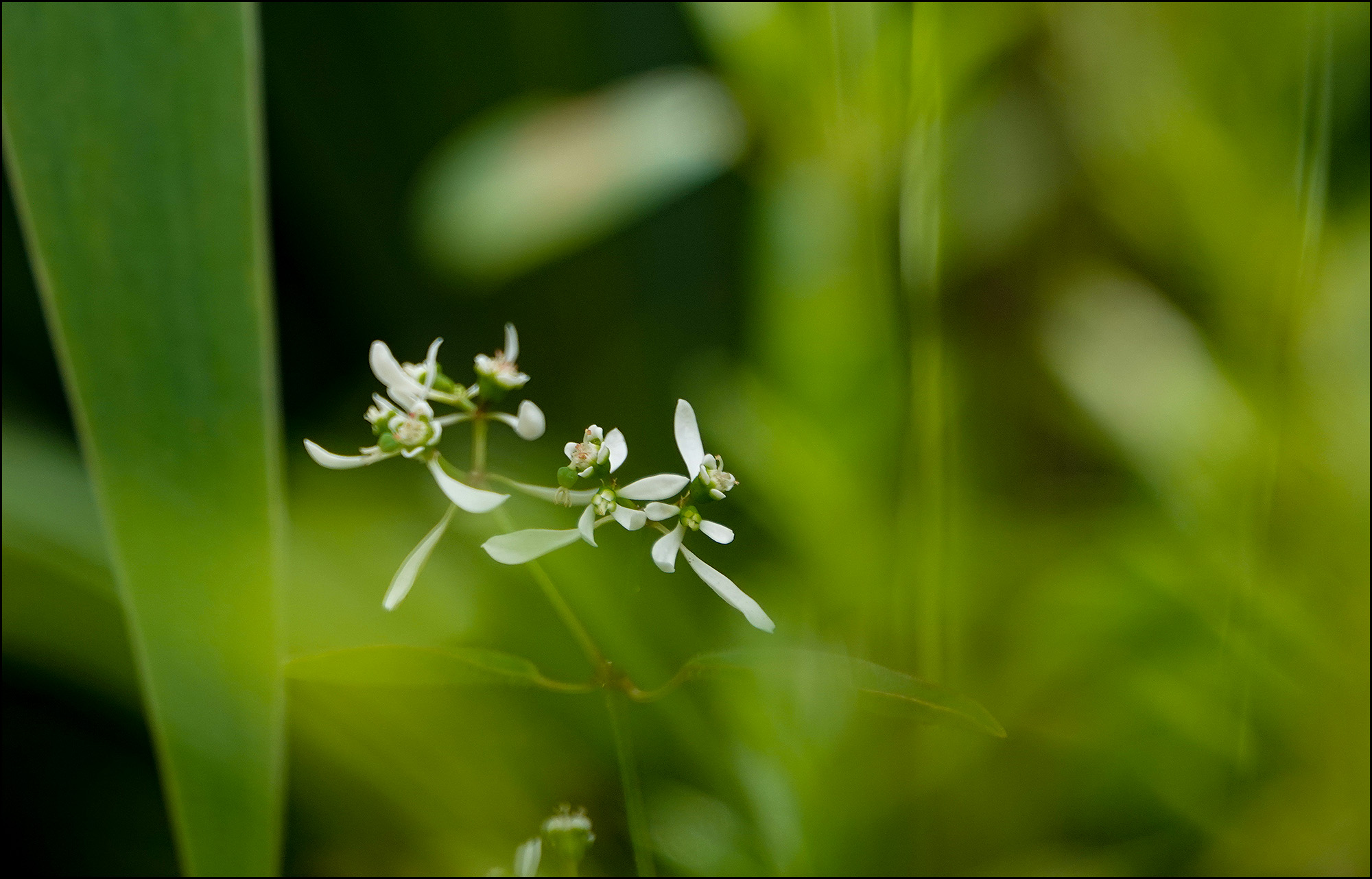A few days ago Marian told me she had seen an oriole in our front yard. An oriole? Aren’t those from Baltimore or something? Sure enough, though, it turns out there are loads of different kinds of orioles, including many that populate the western US. I had just never seen one before. So I got a chair and went outside to wait for the oriole to show up.
Unfortunately, our oriole was a shy fellow. He would flick by momentarily, attracted by the yummy, luscious orange that Marian put out, but then he’d fly away before I could even focus the camera. After a couple of rounds of this, I decided to sit in my chair more often. And then I decided that as long as I was sitting in my chair, I would take pictures of all the flora and fauna of our front yard that I could capture without moving. Here it is. Part 1 is today; Part 2 is coming up tomorrow.
I did eventually get a picture of the oriole. He never got close, so it’s not a great picture, but it is a hooded oriole.
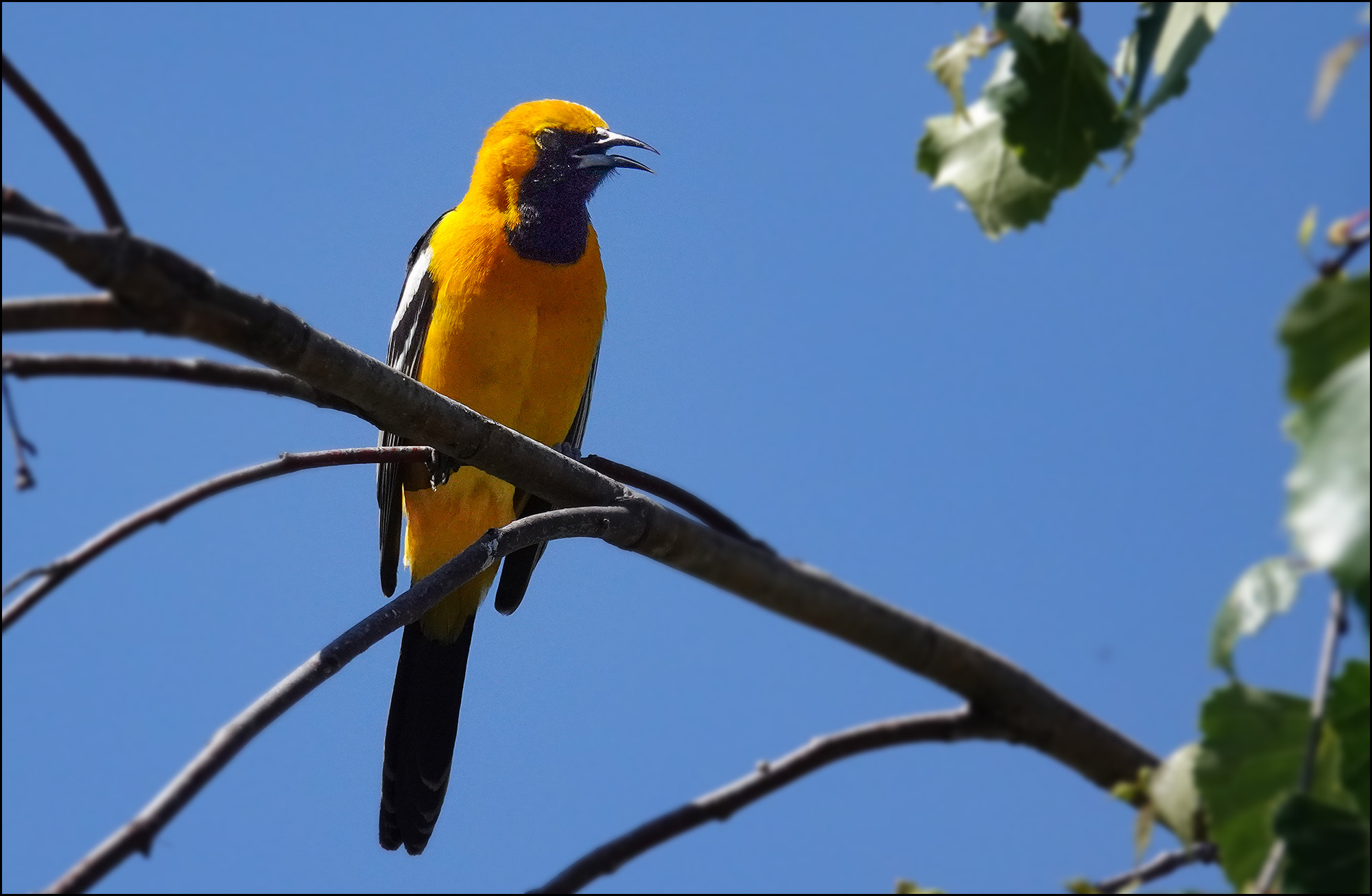
I’m not sure what this is. A female hooded oriole stealing the hummingbird food? UPDATE: Yes, it’s a female hooded oriole.
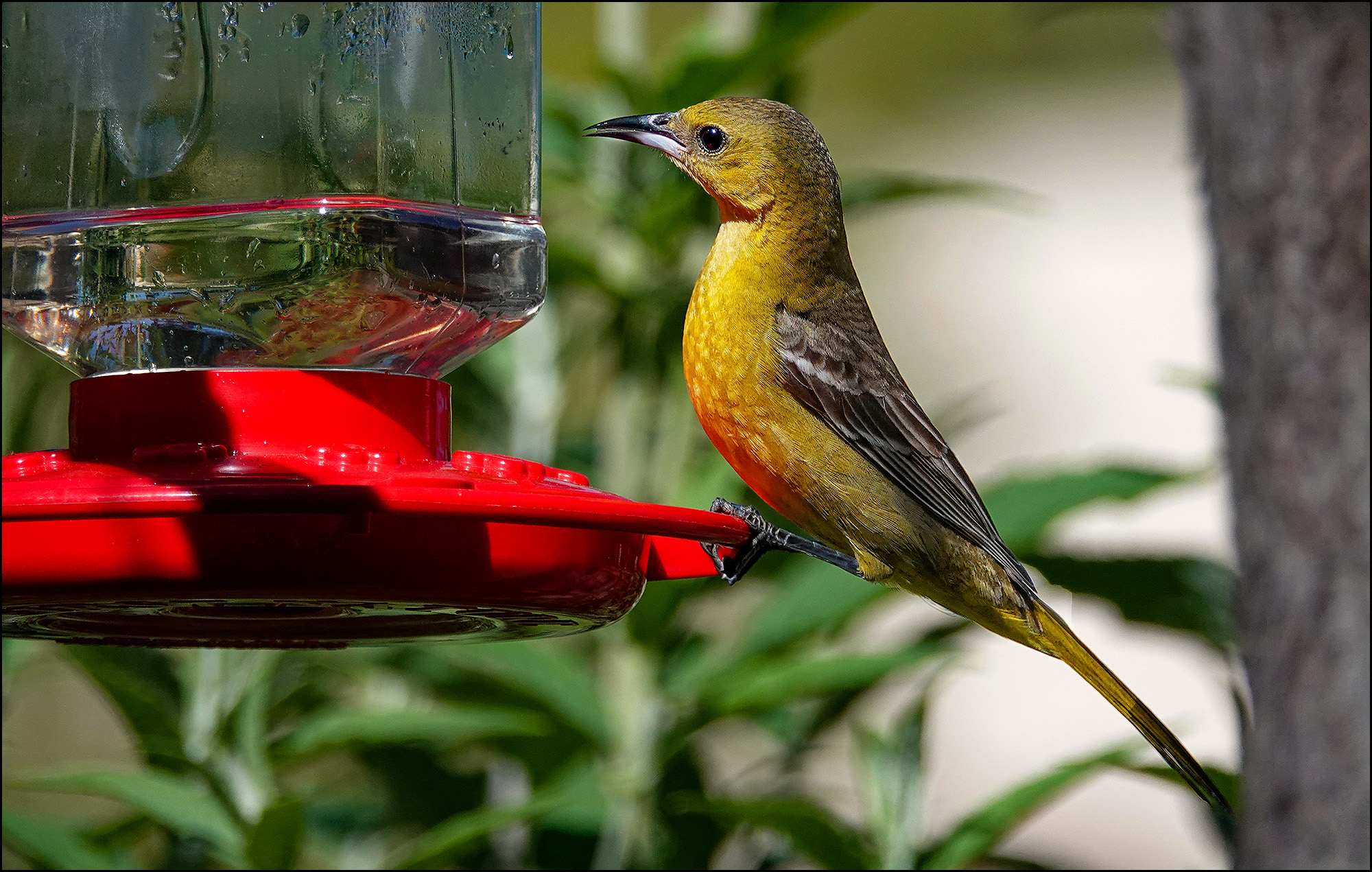
You’ve seen this flower before. It’s an Easy-Does-It rose, just blooming. Later in life it will develop a light, subtle pinkish and salmon color.
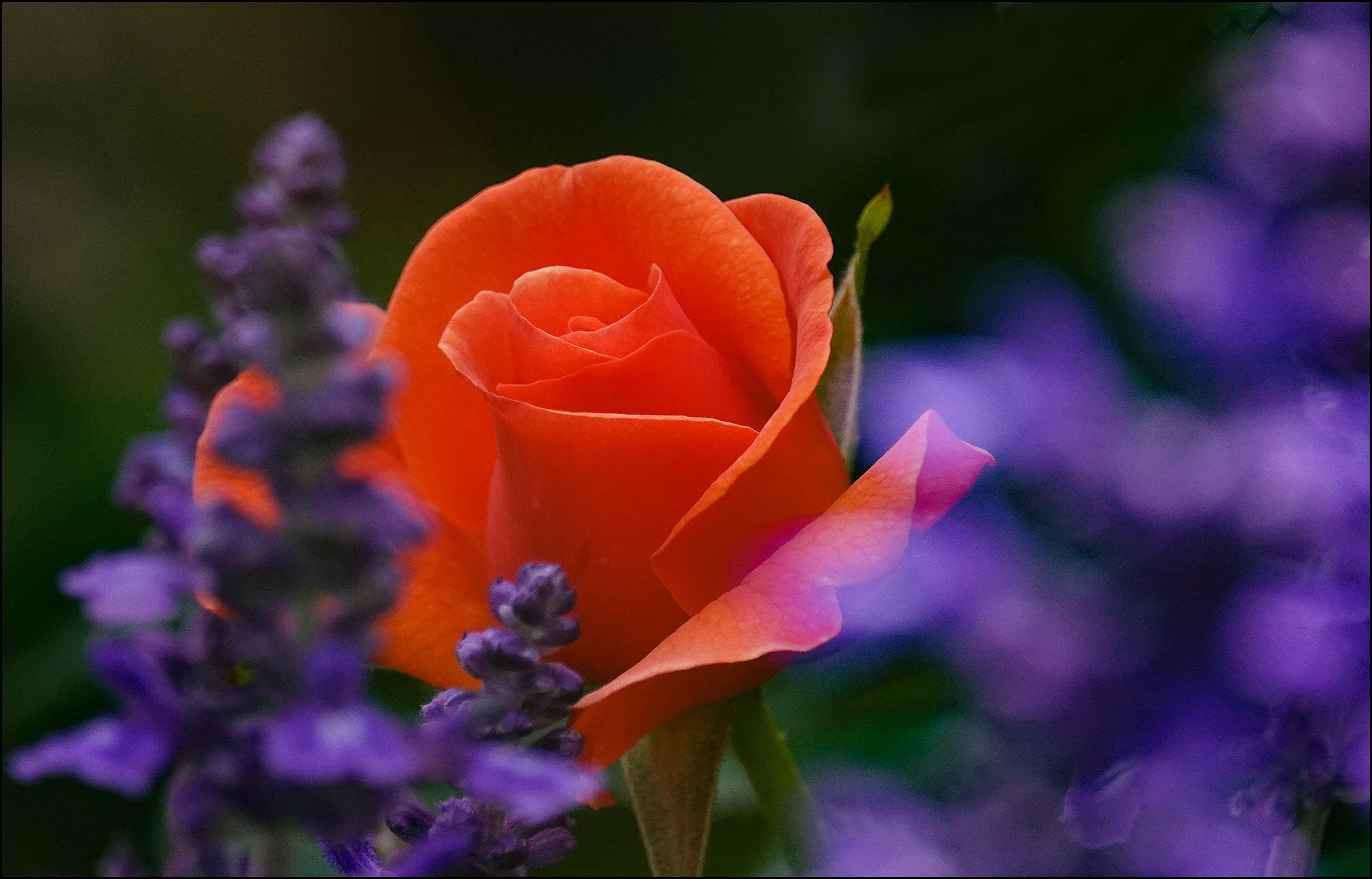
No flora and fauna gallery would be complete without hummingbirds. The key to a good hummingbird picture is luck. Basically, you put the camera in burst mode and set the autofocus to continuous. This is a little less accurate than the primary autofocus, but it tracks moving objects and tries to maintain focus on them. It works pretty well, but it only occasionally produces a picture that’s really tack sharp. I only got one.
What’s also interesting about this picture is that it was shot at 1/3200th of a second but the hummingbird’s wings are still frozen. I thought I needed at least 1/20,000th for that. This is good to know since the lower shutter speed allows a lot more flexibility in my other settings.
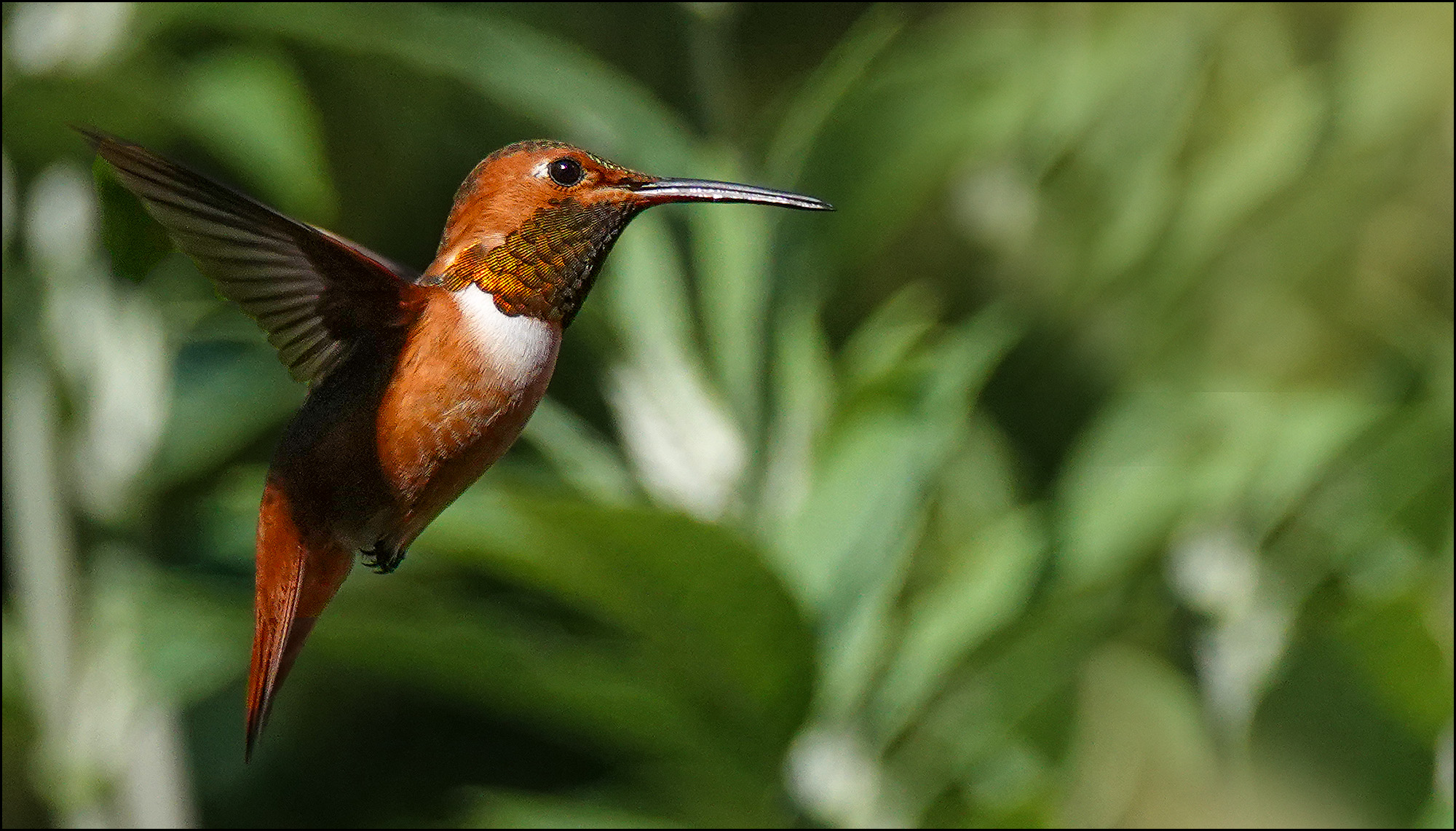
This is the same hummingbird, shot later in the day when the sun was shining directly on its throat. This was shot at 1/250th of a second, which produces an interesting (and lucky) effect: the bird’s throat is sharp but the rest of its body is fuzzy.

These are the stems of our bearded iris.
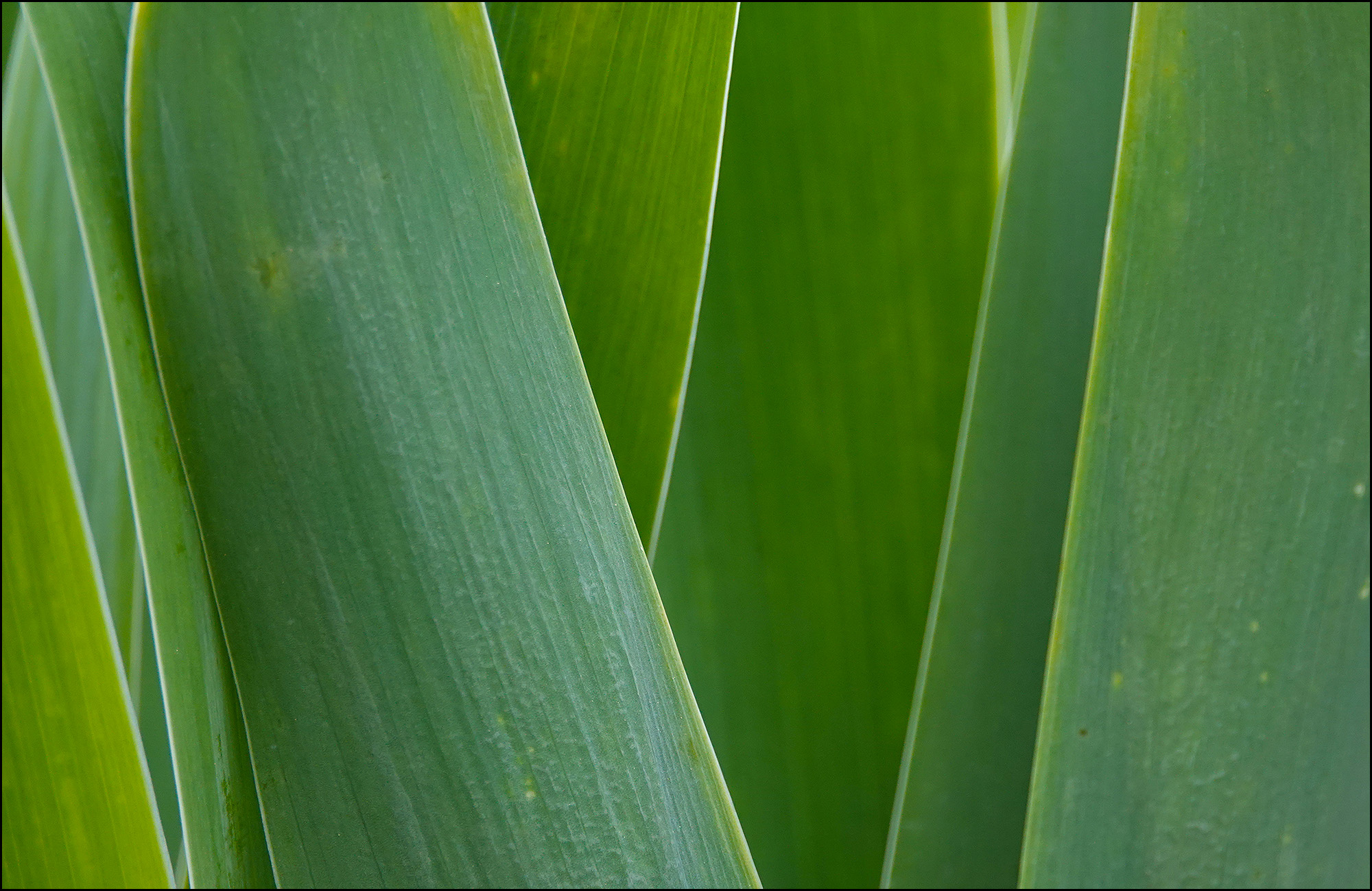
Here’s a honey bee with its mind clearly on a nice little snack.
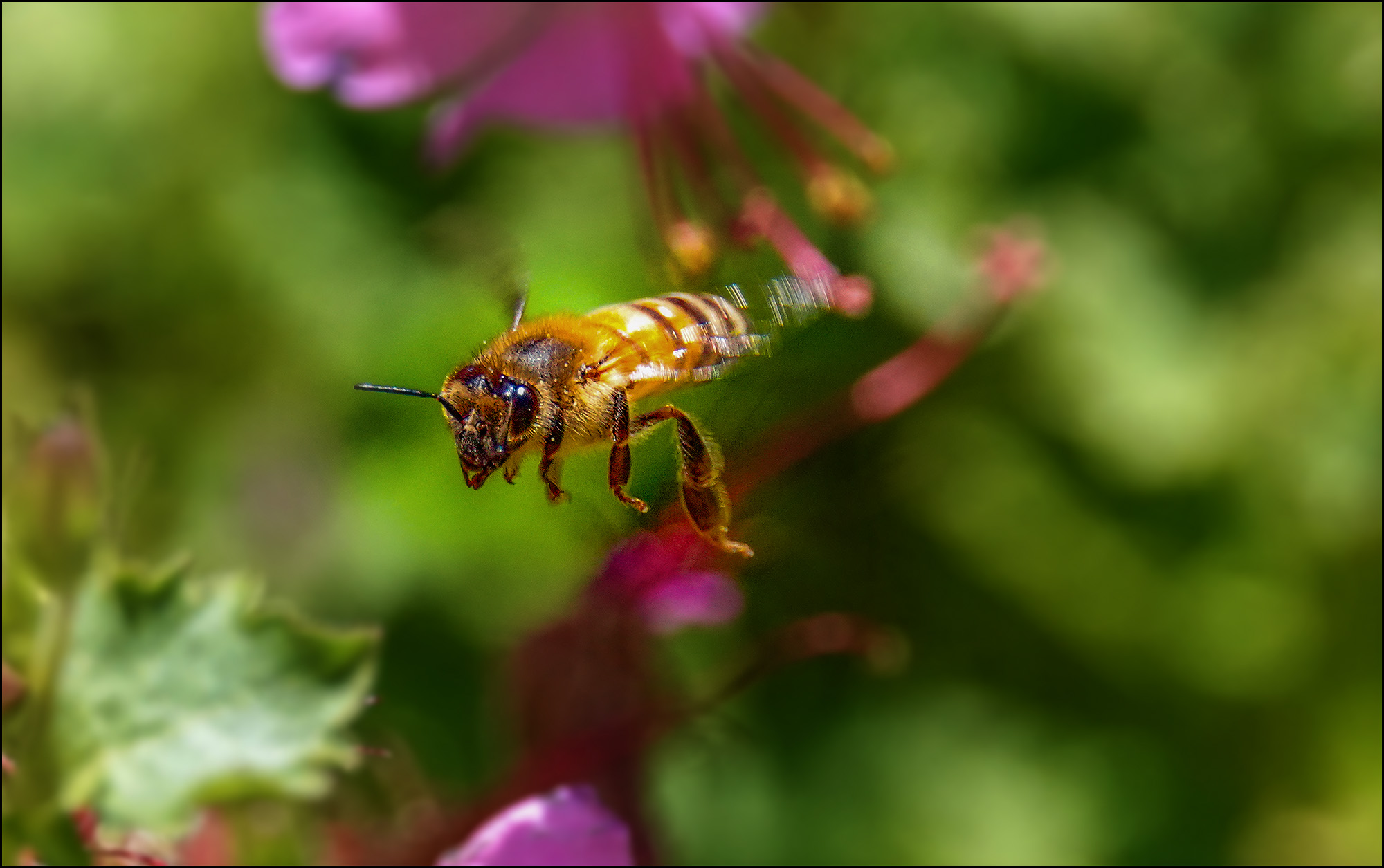
Some pink and white alstroemeria plants.
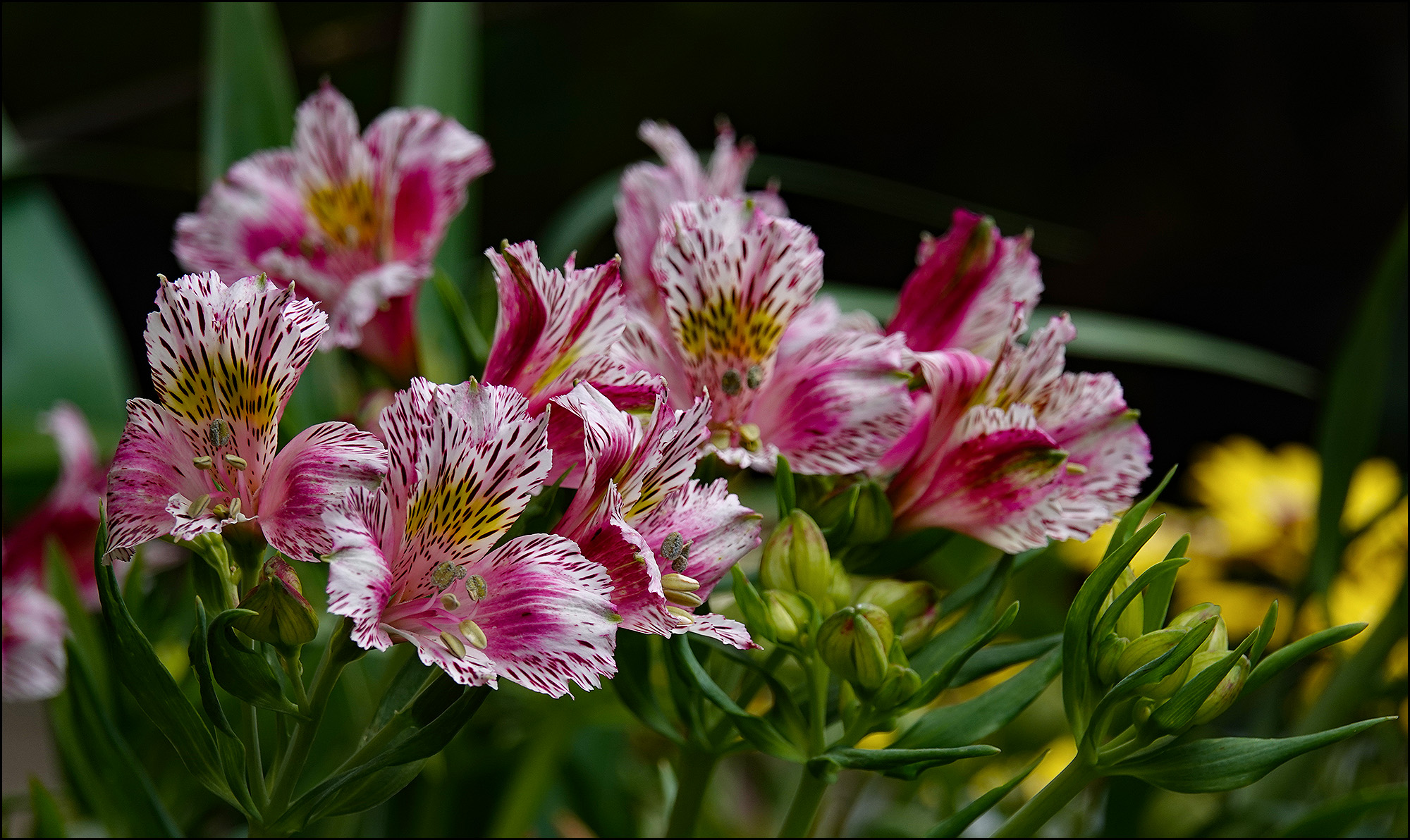
Ooh, this is a pure black bee of some kind, perhaps a rare example of A. darthvaderis.
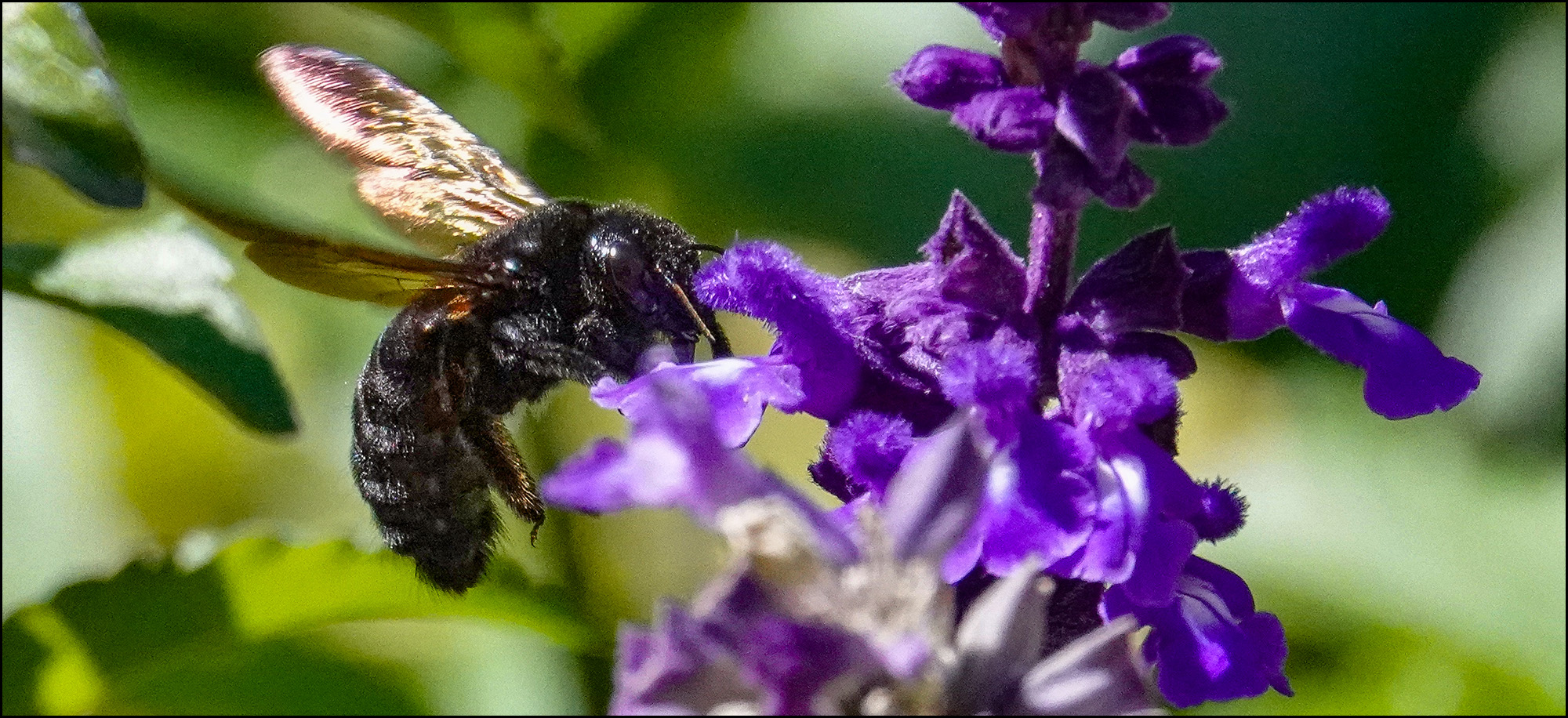
I don’t know what this is. Maybe moss phlox? UPDATE: It’s Chamaesyce hypericifolia, otherwise known as graceful sandmat.
